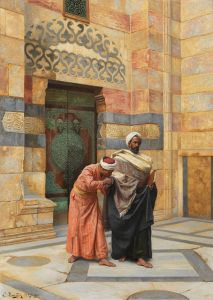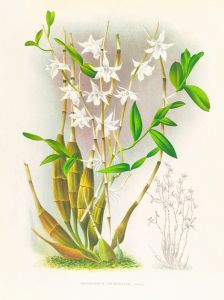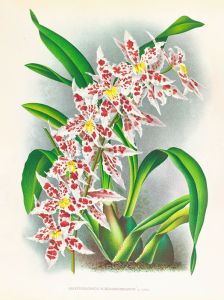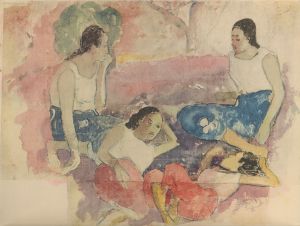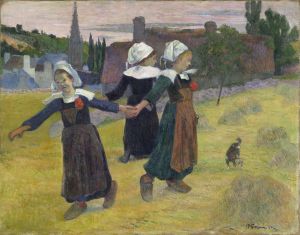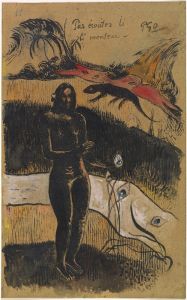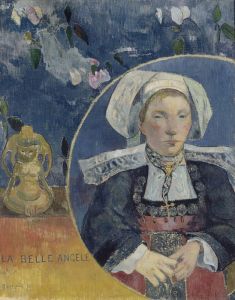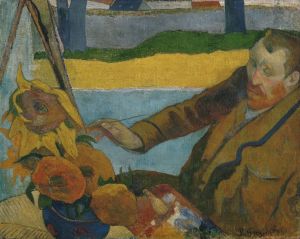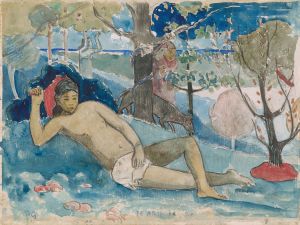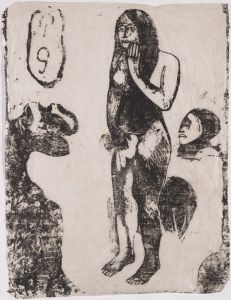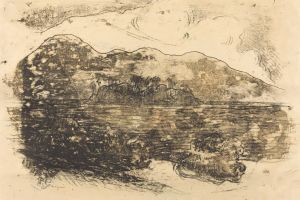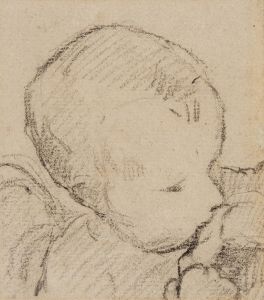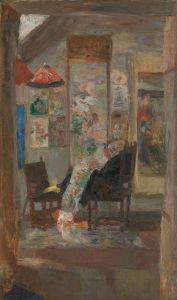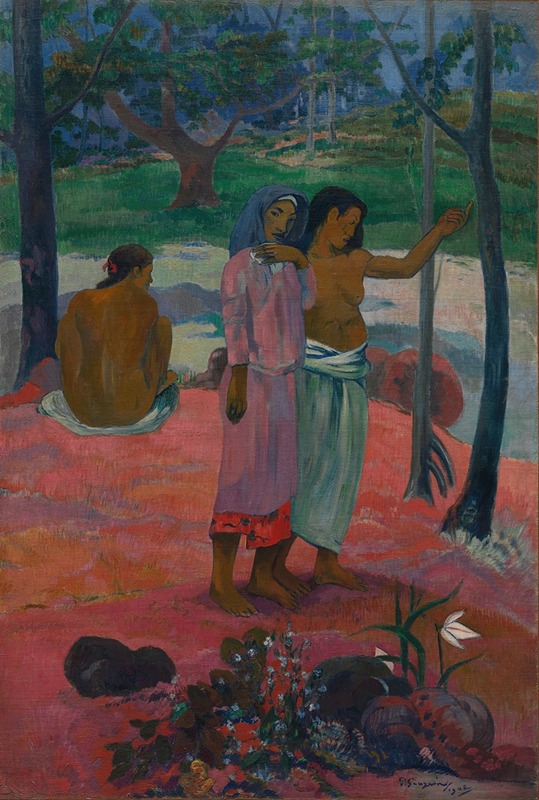
The Call
A hand-painted replica of Paul Gauguin’s masterpiece The Call, meticulously crafted by professional artists to capture the true essence of the original. Each piece is created with museum-quality canvas and rare mineral pigments, carefully painted by experienced artists with delicate brushstrokes and rich, layered colors to perfectly recreate the texture of the original artwork. Unlike machine-printed reproductions, this hand-painted version brings the painting to life, infused with the artist’s emotions and skill in every stroke. Whether for personal collection or home decoration, it instantly elevates the artistic atmosphere of any space.
Paul Gauguin's painting "The Call" is one of the notable works by the French post-impressionist artist, who is renowned for his bold use of color and synthetist style that set him apart from his contemporaries. Gauguin's work often explored themes of primitivism and was heavily influenced by his travels to Tahiti and other parts of French Polynesia.
"The Call" was painted in 1902, during Gauguin's final years living in the Marquesas Islands, where he sought to escape European civilization and immerse himself in what he considered a more authentic and unspoiled culture. This period of his life was marked by a prolific output of art that reflected his fascination with the indigenous people and landscapes of the islands.
The painting features two women standing in a lush, tropical landscape, a common motif in Gauguin's work from this period. The figures are depicted in a stylized manner, with bold outlines and flat areas of color, which are characteristic of Gauguin's synthetist approach. This style was a departure from the impressionist focus on capturing the effects of light and atmosphere, instead emphasizing symbolic content and the emotional impact of color and form.
In "The Call," the two women are shown in traditional Polynesian dress, with one of them gesturing with her hand, which could be interpreted as a form of communication or invitation. The background is filled with vibrant vegetation, reflecting the lush environment of the islands. Gauguin's use of color is particularly striking in this work, with rich greens, blues, and earth tones that convey the exoticism and beauty of the tropical setting.
Gauguin's time in the Marquesas was fraught with personal difficulties, including health problems and conflicts with colonial authorities. Despite these challenges, he continued to produce art that was deeply influenced by his surroundings and his interest in the spiritual and cultural life of the Polynesian people. "The Call" is a testament to Gauguin's enduring fascination with the themes of paradise and the primitive, which he believed were embodied in the people and landscapes of the South Pacific.
The painting is part of the collection at the Cleveland Museum of Art, where it continues to be studied and appreciated for its artistic and cultural significance. Gauguin's work, including "The Call," has been the subject of much scholarly analysis, particularly in terms of its representation of non-European cultures and its impact on the development of modern art.
Overall, "The Call" exemplifies Gauguin's unique artistic vision and his quest to capture the essence of a world that was, to him, both mysterious and profoundly inspiring. The painting remains a significant piece within Gauguin's oeuvre, offering insight into his complex relationship with the cultures he encountered and his innovative approach to art-making.





